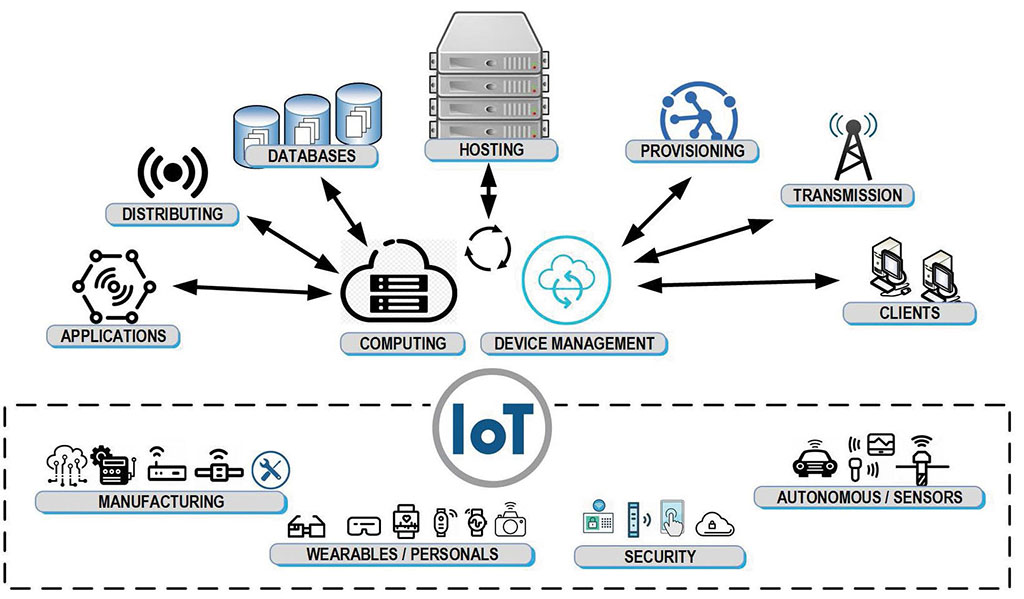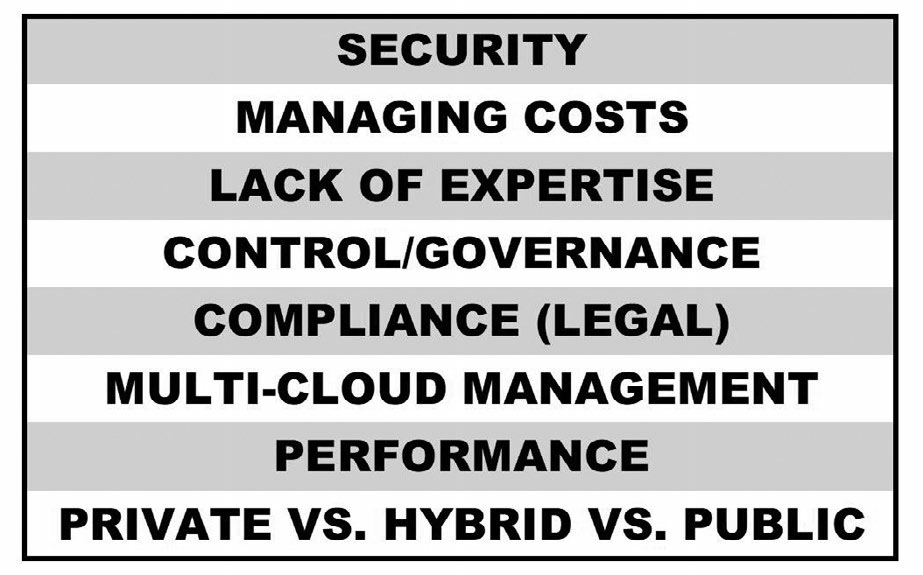Re-Aligning Clouded Concerns
Depending upon who you talk to or what you read, the topic of cloud seems to be one of the most prevalent of all the various technology opportunities—irrespective of whether the application is for science, research, media or data management. Cloud computing is listed by technology experts as “one of the topmost influential [IT] trends of this century;” lending credit to having fundamentally altered the way business and industry reacts to solving its technology needs.
The earliest known use of the term “cloud computing” (in print) is in a Powerpoint document for a business plan presentation at Compaq (founded in 1982) with the title “Internet Solutions Division Strategy for Cloud Computing.” That internal 1996 Compaq document stated that “Internet Cloud will have substantial impact on Compaq customers… across enterprises, small/medium businesses, and consumers and SOHO.” By October 2011, the term “cloud computing” had appeared 48 million times on the internet according to the MIT Technology Review.
Today, the cloud (a metaphor for the internet) and cloud computing impact a great deal more than just business and industry. With the emergence of the Internet of Things (IoT)—which is strongly connected to the cloud—use of the technology now affects aspects of both business and our personal lives in growing ways.
CLOUD, AI AND IOT
So, naturally, one of the higher-level topics of concern is the interaction of the cloud and the IoT, and how artificial intelligence (AI) will play into those activities.
Cloud computing, often simplified to “the cloud” involves the delivery of data, applications, media content (photos, videos, sound) and more to data centers utilizing the internet. The IoT, however, references the connection of devices to the internet and purposely segregates the computer or other straight communications devices—such as smartphones or computers (Fig. 1).

The IoT is generating an enormous amount of data, most of it in the cloud, and as such depends more and more on secondary intelligence (such as AI and ML) for its analysis, categorizing, storing or distributing. According to a two-year-old report from International Data Corp., “By 2019… 100% of IoT initiatives will be supported by AI capabilities.” This further infers that IoT and cloud will be directly connected, and intelligently managed, in order to sustain its growth and purpose long-term.
GROWTH OF CLOUD COMPUTING VS. THE DATA CENTER
Cloud generally provides multiple services; among those are the familiar offerings of compute, storage and disaster recovery—but the other offerings (SaaS, PaaS, etc.) are the “other side of the coin” with dynamics that are continually changing. For example, Infrastructure as a Service (IaaS) is, according to Gartner, forecasted to be the leader in the growth of cloud services, expected to increase in excess of 27% for 2019.
However, cloud application services, such as SaaS (software as a service) remains the largest segment of the cloud markets, revenue-wise, with growth around 18% expected between 2018 and 2019. Those providers who offer both IaaS and PaaS (platform as a service) will lead the pack when considering cloud-computing services for business and industry.
Observers and prognosticators alike seem to be aligning the perspective that, as the cloud matures and consumes market share, the typical data center will, in some circles, “die a slow death.” Perhaps the reality is that the makeup and functionality of the data center will adjust to balance the kinds of cloud services based upon applications, scale or purpose. With that, Gartner predicts that by 2025, 80% of companies will cease operations of the “traditional” data center and move those environments to that of a legacy “holding area.”
PRIVATE OR PULIC?
The argument for public vs. private cloud implementation also continues to ripple throughout the industry. Some believe and promote the private cloud, stating it can “decrease costs, increase efficiencies and offer more security” given that the private cloud lives within the firewalls of the organization. Datacenter operators who place computing resources and its hardware in a unified, software-defined and virtualized unit that is privately managed (for security or compliance reasons) are defined as “the private cloud.”
Effectively, the private cloud can provide similar services to those found in the public cloud, except that the private cloud’s abilities to scale are limited by physical space and capital availability; harmonized with the complexities of obtaining rapid change outside the boundaries of the physical datacenter’s walls.
The public cloud generally offers services that can scale to most any level, can provide flexibility of services “on demand,” but, like private cloud, offer certain challenges that counter the value of the on-premise capabilities of a private cloud.
MANAGED CLOUDS
Private clouds may be “in-house” (i.e., on-premises) or they may be provided by a private, third-party hosting service referred to as “externally hosted” or a “managed private cloud.” In-house clouds are run by the owner/organization, provide a greater sense of security and pose less risk to the organization in most cases. An externally managed private cloud, as opposed to the “public cloud” (such as AWS, Google, etc.), changes the security equation, issues of ownership and risk/worries over what happens should the provider be sold or go out of business.
A rapidly growing segment of cloud is that of the remote hosted private cloud. Here the organization has an ownership-interest in the physical hardware; it is just managed remotely by a third party. This practice was common during the mid-1990s when large co-located (“colo”) centers provided caged sections of the datacenter where customers would land their physical equipment and either care for it themselves or pay others to “keep it operational.” Such spaces were often placed directly adjacent to or in the same building where a major internet POP (point of presence) was located, thus providing quick access and less costly “last mile” services.
CONCERNS FOR CLOUD IMPLEMENTATION
One need not go far, on any search engine, to find the top five to 10 issues and concerns about this continually evolving cloud space. The top three-to-four concerns seem in near total alignment, regardless of which report or article you read.

The number one concern is that of security, often coined “the elephant in the room.” Ironically, until only recently (circa 2018), the number one challenge for cloud was the “lack of resources and expertise” needed to design, deploy and manage the services. Today, that has shifted, moving security to the top and the latter down a notch or two in the concerns stack (Fig. 2).
Depending upon where you put the expertise/resources availability concern, the next in the group of issues for cloud is that of cost containment and management.
It is generally agreed that cloud computing can save businesses money, but the long-term verdict remains open. Organizations don’t need to put huge investments into hardware that then must be recycled every three-to-five years as the obsolescence factor raises its ugly head. The ability, in a cloud environment, to easily ramp up processing capabilities without additional fixed cost investments in hardware continues to attract the customer to this environment. Pay-as-you-go models are further promoted by most public cloud providers; however, the predictability of user need (i.e., on-demand) together with scalability (i.e., growth balanced with requirements for services) sometimes makes it difficult to pre-define costs or predict actual total costs of operations.
Other risks to the cloud services environment include governance, control, compliance, performance and the rapidly changing capabilities of the various cloud service offerings that put a risk to engaging in any long-term contracts that may become stagnant compared to alternatives.
Some feel further that full scale applications should be spread across multiple clouds, driving the cost and deployment equations even higher. So is the answer still “build you own private cloud,” or do you go all in with the cloud and cross your fingers that, long term, you’ll fulfill your needs objectives and come out ahead in the overall race for success at the lowest cost? Time will tell.
Karl Paulsen is CTO at Diversified and a SMPTE Fellow. He is a frequent contributor to TV Technology, focusing on emerging technologies and workflows for the industry. Contact Karl atkpaulsen@diversifiedus.com.
Get the TV Tech Newsletter
The professional video industry's #1 source for news, trends and product and tech information. Sign up below.

Karl Paulsen recently retired as a CTO and has regularly contributed to TV Tech on topics related to media, networking, workflow, cloud and systemization for the media and entertainment industry. He is a SMPTE Fellow with more than 50 years of engineering and managerial experience in commercial TV and radio broadcasting. For over 25 years he has written on featured topics in TV Tech magazine—penning the magazine’s “Storage and Media Technologies” and “Cloudspotter’s Journal” columns.
